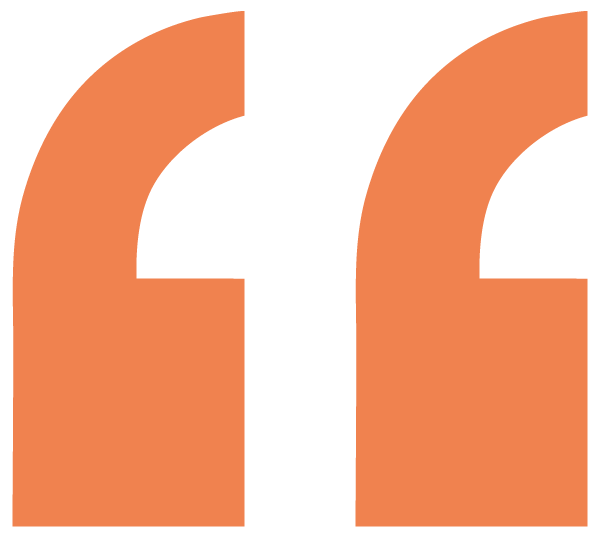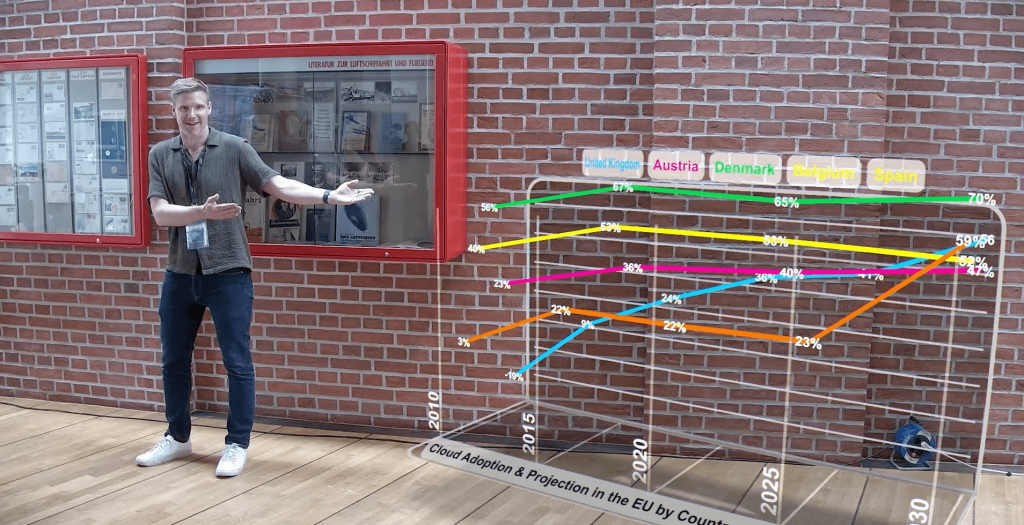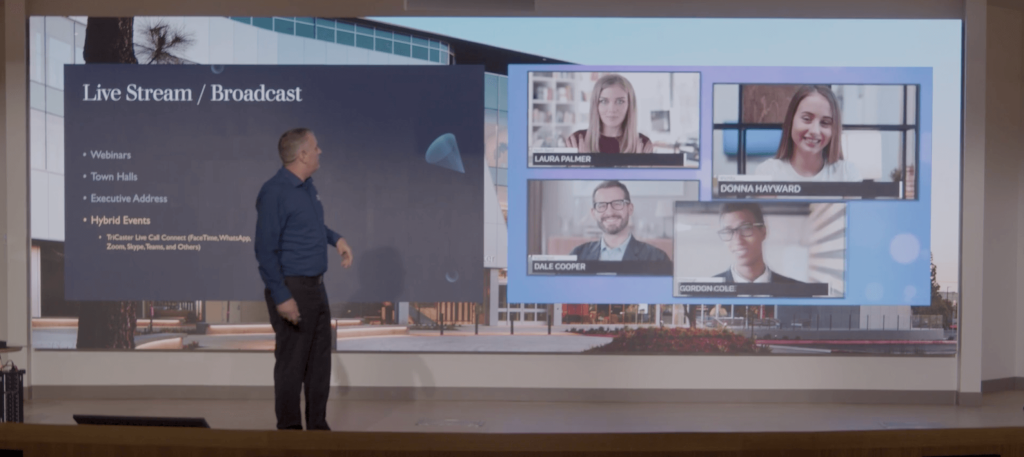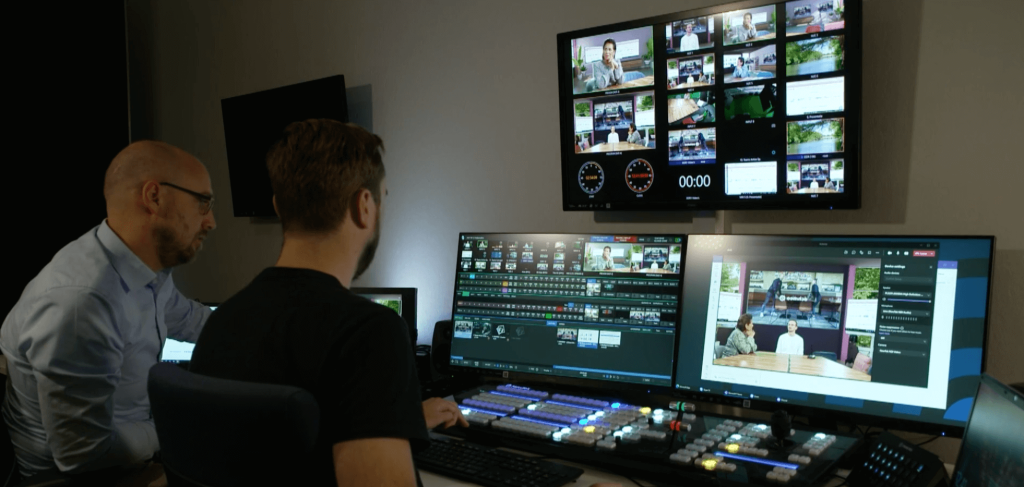For any business, the chances of sustained success and profitability depend upon the talents and efforts of its employees. Yet many employers are finding it difficult to attract, support, motivate, train and retain the people they need.
In part, this is due to a lack of cohesive communication and engagement with employees. Digital technologies – and the influence of the pandemic – have accelerated changes in the traditional workplace, enabling flexible and hybrid working arrangements. Technologies including high quality video solutions have transformed the infrastructure of many companies, creating dynamic, hybrid environments.
Despite hybrid working offering useful advantages, it can leave some colleagues feeling disconnected from their employer and colleagues. This is a major problem, because that all-important sense of connection and meaningful engagement is crucial in driving employee motivation, collaboration and productivity.
So, in the era of hybrid working, creating and maintaining effective internal communications and meaningful employee engagement has become one of the most important challenges faced by any organization. Recent estimates suggest that low engagement among employees may have reduced global GDP by 9%, putting the cost of this unproductivity and disconnection in the billions of dollars. With the hybrid and remote working model not going anywhere anytime soon, businesses need to grasp new ways to engage with their employees to reduce the risk of losing top talent.

quality of communications
Nearly seven out of ten (69%) employees surveyed agree the quality of communications they receive from their company affects how engaged they are as an employee.
Nearly seven out of ten (69%) employees surveyed agree the quality of communications they receive from their company affects how engaged they are as an employee.
Driving clear communications that motivate
We conducted research to dive deeper into the significant link between effective employee communications and company performance.
Nearly seven out of ten (69%) employees surveyed agree the quality of communications they receive from their company affects how engaged they are as an employee.
Similarly, almost two-thirds (65%) feel that receiving business updates through methods such as Town Halls, webinars and other video content helps them to understand those updates better, along with feeling more aligned with the company’s vision.
What’s clear from these findings is that video is a valuable tool for building employee engagement and boosting both motivation and productivity in dispersed or hybrid organizations.
They show that when based on excellent technology, internal communications via video deliver multiple business benefits, that enhance the delivery of all employee communication and training initiatives.
What employees are saying about the benefits of video
What employees are saying about the benefits of video
Unlocking the benefits of video
Unlike other forms of communication, video offers greater immediacy and clarity when it comes to delivering business updates and other staff communications. And, with the opportunity to put a ‘face’ to the communications being delivered, staff often feel better connected to those leading the organization, aligning themselves with the company mission and vision. In our survey, we found that approximately half of employees (49%) agree that good quality video communication from their company has a positive impact on their motivation.
With the wealth of instant messaging workplace tools now on offer, we know that most employers use video in some way for internal communications. Yet worryingly, not all recognize its importance as a tool to connect with colleagues and boost morale. 17% of respondents say their employer still does not use any video in internal communications, and more than one in five (22%) say video is used in only half of the communications they receive.
This isn’t to say that a bog-standard video will tick the box when it comes to effective employee engagement. It’s all about quality, not quantity. Even the most video-savvy organizations can risk missing the mark when using video as a communication tool. In fact, four out of ten employees say poor video communications would make them consider leaving their job. If the way an organization uses video is unconvincing or annoying, it could risk doing more harm than good.
Poor video communications are not only an internal reputational issue either. More than one in three respondents (38%) say the poor use of video in internal communications weakens the credibility of a business. Were this impression to become widespread within or even outside of a business, an organization’s public credibility and reputation could be on the line, too.
The secret to unlocking effective video communication
There are several ways to use video in internal communications that deliver tangible business benefits. Videoconferencing, which is used by 53% of our survey respondents’ employers, enables vital virtual face-to-face contact between colleagues and teams. Video calls, used by 48% of organizations, naturally offer similar benefits.
However, our research revealed that employees also expect to be entertained via their organization’s video presence. A huge 48% of respondents feel that an element of entertainment is important, with 39% claiming that interactive graphics would prove the most entertaining. This is followed by 34% stating virtual reality would provide the most entertainment value, along with 3D animations (32%).
Despite a willingness to use video, it’s striking that three out of ten employers are not using any of these features, missing huge opportunities to enhance the way they communicate and engage with employees. Our research findings show that, in our screen-dominated world, employees are more engaged when they are entertained.
Download Our Ebook
Want to learn more about how you can better engage your employees? Download our ebook to discover the full findings.






























